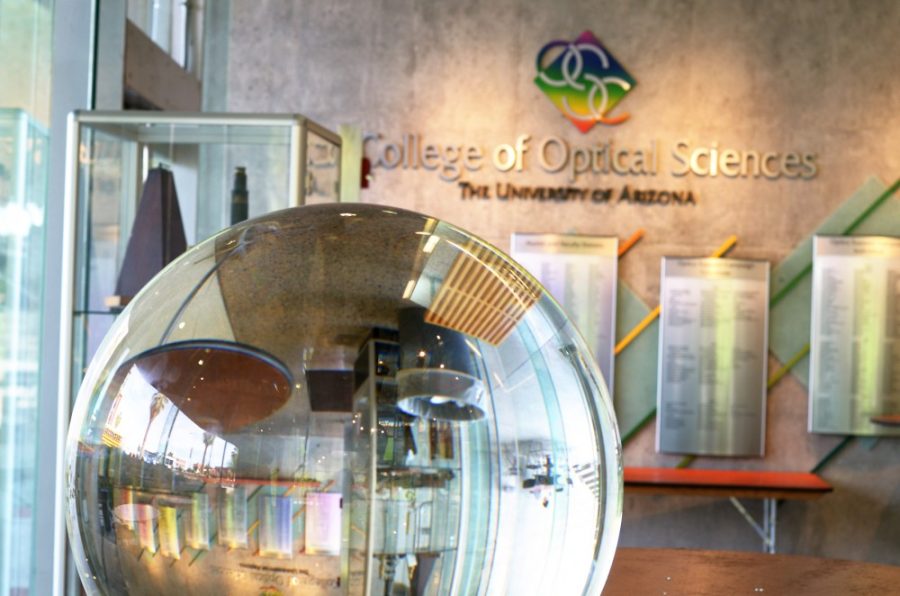When the UA College of Optical Sciences was established, there was no official building for the school. Instead, the college was located in temporary quarters on campus. There were no fancy offices, no mirror lab and very few students enrolled in the new program.
This month, the college is celebrating its 50th anniversary with conferences and events for both optical engineers and the general public alike. The college has already hosted a Laser Fun Day, during which members of the community visited campus and played with lasers, and attended the SPIE Conference in San Francisco, which discussed topics like photonics and laser technology, along with other facets of optical engineering.
In light of the celebratory events, many students and faculty members reflected on the legacy of the institution.
“It started with the vision of one man, Aden Meinel,” said Michael Nofziger, a professor in the college, “and to this day, everyone that has graduated from here, and everyone that has worked here … we owe a debt of gratitude to his vision.”
When Meinel founded the college in 1964, there was a shortage of optical engineers in the U.S. With the aid of the university and funding from the U.S. Air Force, the UA Optical Science Center was created, Nofziger said.
According to Tom Koch, dean of the College of Optical Sciences, the institution has grown to cover four areas of optical science disciplines: image science, which involves reconstructing and optimizing images; photonics, which deals with the use of light and electricity in technology; optical physics, which focuses on more fundamental scientific questions; and engineering, which is all about creating objects or technology that can be used to further optical research.
“One of the activities I’m trying to reinforce is that we do have a culture of not just doing academic, think tank type of things, but that we are actually making stuff and having it be deployed,” Koch said. “There is a huge span from fundamental science all the way down to the hardware [that is used].”
The college is involved in many significant projects on and off campus as well.
The center is currently involved in the development of the largest telescope ever designed to look at the sun, called the Advanced Technology Solar Telescope, Koch said.
Along with this project, the school is highly involved with the UA Mirror Lab, as it not only makes the mirrors, but creates the tools needed to maintain and polish them.
It’s the interdisciplinary involvement in these kinds of projects that draw students into the program, said Koch, adding that, while the college is primarily composed of graduate students, many undergraduate engineers are also part of the department.
Cory Boone, an optical engineering sophomore, recalled that his tour of the Mirror Lab was one of the reasons he wanted to go into the field.
“I did a summer program here where you stay in the dorms and learn how to use all the engineering stuff,” he said, “and then we took a tour of the Mirror Lab and I just thought it was the coolest thing ever.”
Although optical programs affiliated with astronomy and visual optics garner the most attention, the reach of optical engineering stretches into several other fields, including medicine, laser development, defense and computer science, Nofziger said. Even the cameras in our cell phones rely heavily on optical engineering, he added.
Ranked No. 7 nationally, what was once a homeless department on the university campus is now one of the top institutions in the nation for studying the applied science of optics, according to the 2014 U.S. News & World Report of the Best Grad Schools.
“[Optics] supports such a huge fraction of our economy, and there is no sign of it running out,” Koch said. “The amount of innovation that remains there and the rate of discovery increases rather than decreases. So [the] question is who is going to reap the benefits of that, and we’d like to see … something that we can all benefit from.”









